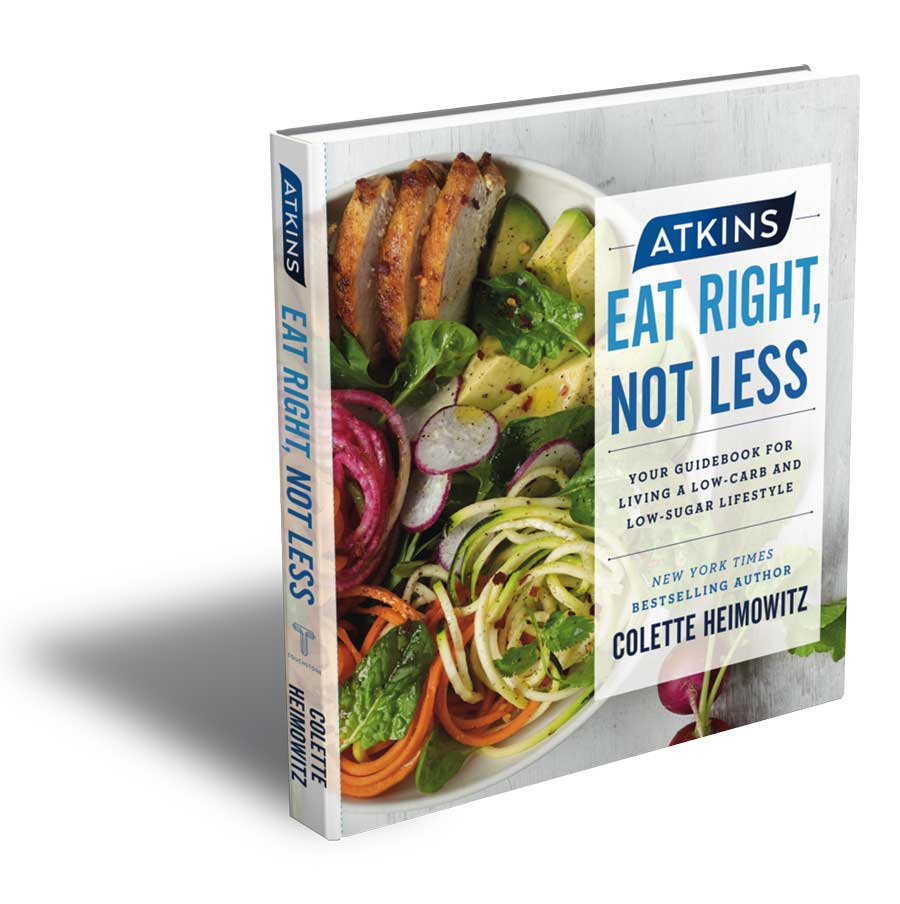What’s new about the Atkins Diet?
Six new updates to the Atkins Diet, plus why it’s so easy to lose weight on a low-carb diet.
Story: Colette Heimowitz
In its almost 40-year evolution, the Atkins Diet has undergone a number of changes that keep up with emerging nutritional science, and it has truly evolved into a low-carb lifestyle, not a short-term quick fix. The New Atkins is easy to follow, more versatile, and sustainable for a lifetime of healthy eating.
Here are some of the major changes:
- You eat more veggies. On Atkins, you’re eating more veggies each day than the average American eats. Right from the start, you’ll eat five servings of high-fiber “foundation vegetables,” which include leafy greens, other salad vegetables, and additional low-carb vegetables that are usually cooked. The list of foundation vegetables includes more than 50 vegetables.
- You can do Atkins on your terms. You have your choice of three levels: Atkins 20, 40, or 100, which means you can decide how many grams of carbs you’d like to consume, depending on your personal carb tolerance. You can also easily move between each level, and you’ll learn how you can make this transition in the latest Atkins book, “Eat Right, Not Less.”
- You can go meatless on Atkins. If you’re vegetarian or vegan, you’ll receive detailed advice on how to follow a low-carb lifestyle that accommodates your dietary needs.
- You learn how to do Atkins anywhere. Whether you’re on the road, stuck at the office, on vacation, or out to eat, you’ll learn all the tips and tricks for sticking with Atkins at airports, in fast-food places, and any restaurant.
- You learn about the hidden sugar effect. Did you know your bloodstream can process only 1 to 2 teaspoons of sugar at a time? There are foods, such as whole-wheat bagels, which may contain carbohydrates that convert to more sugar in your bloodstream than your body can process. And that excess sugar can be stored as fat. This is called the hidden sugar effect. Once you learn how to identify foods containing hidden sugars, you’ll be able to make the right food choices.
Why you lose weight with Atkins
Whether you have a little or a lot of weight to lose, you will usually find you can lose weight quickly, especially with Atkins 20. And you can do so without being plagued by hunger and cravings once your body makes the switch to a fat-burning metabolism, which usually takes about a week. After this, you usually experience a surge of energy because you have gotten off the blood sugar roller coaster that results from eating a diet high in sugar, white flour, and other refined carbohydrates.
Science supports Atkins
There are more than 80 studies that prove Atkins is a safe and effective way to lose weight, but it also can help you overcome diabetes, hypertension, and metabolic syndrome.
Atkins 20, 40, and 100: How to get started
For many, Atkins 20 is a brief jump-start phase that will start you off on the right foot before moving on. Or you can stick with Atkins 20 longer and lose more weight before transitioning to Atkins 40 or Atkins 100. If you have more weight to lose or certain health issues, start in Atkins 20, but otherwise, you can start on Atkins 40. It’s up to you. If you want to reduce your carbs gradually by making smart lifestyle choices, and you do not have a lot of weight to lose, Atkins 100 is right for you. Regardless of where you start, you’ll be eating optimal protein, healthy fats, and high-fiber carbs, which means you’ll be enjoying a wide variety of delicious food while staying satisfied and never hungry.

